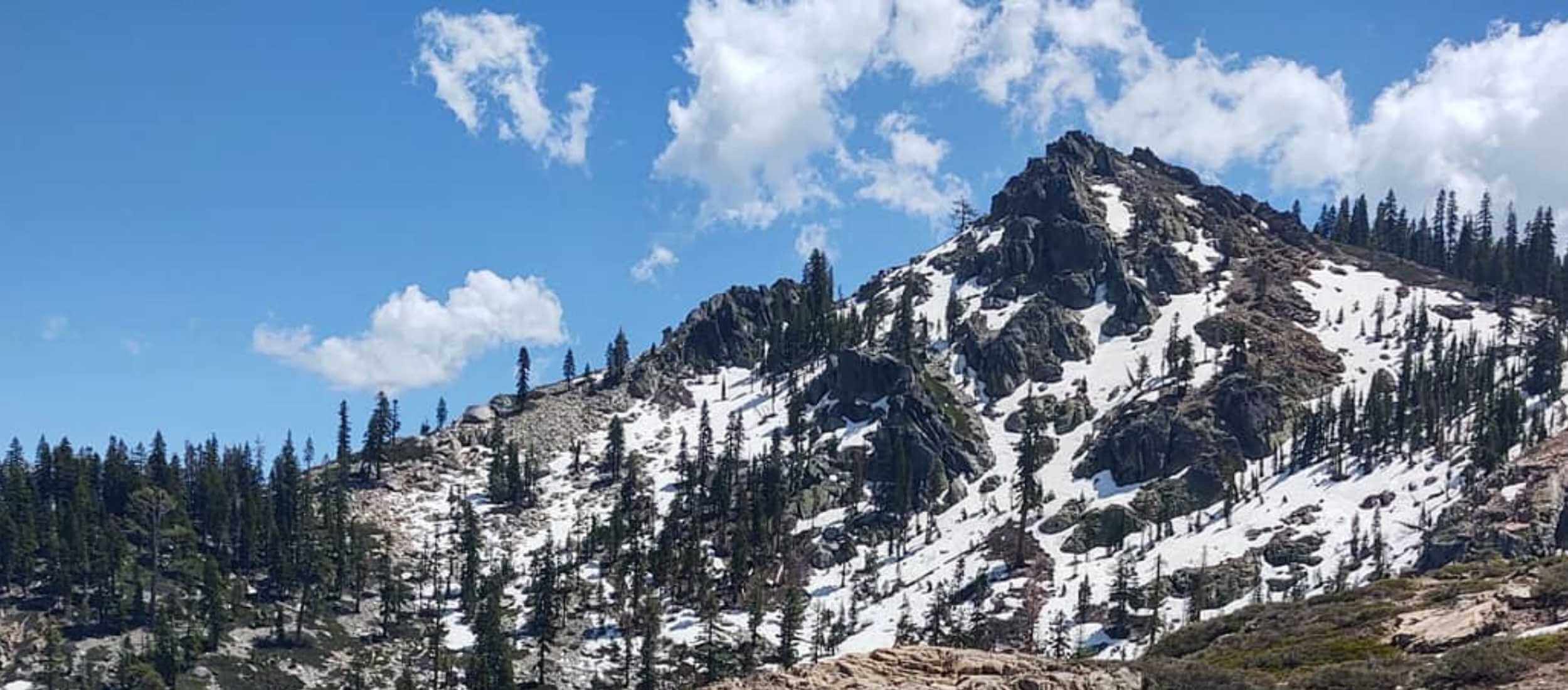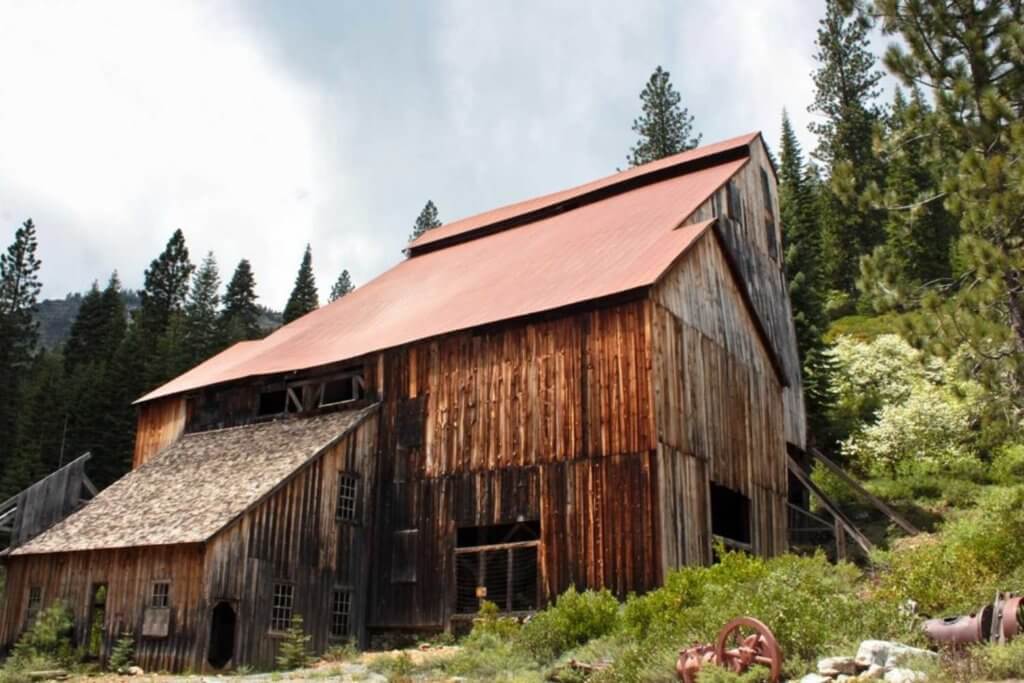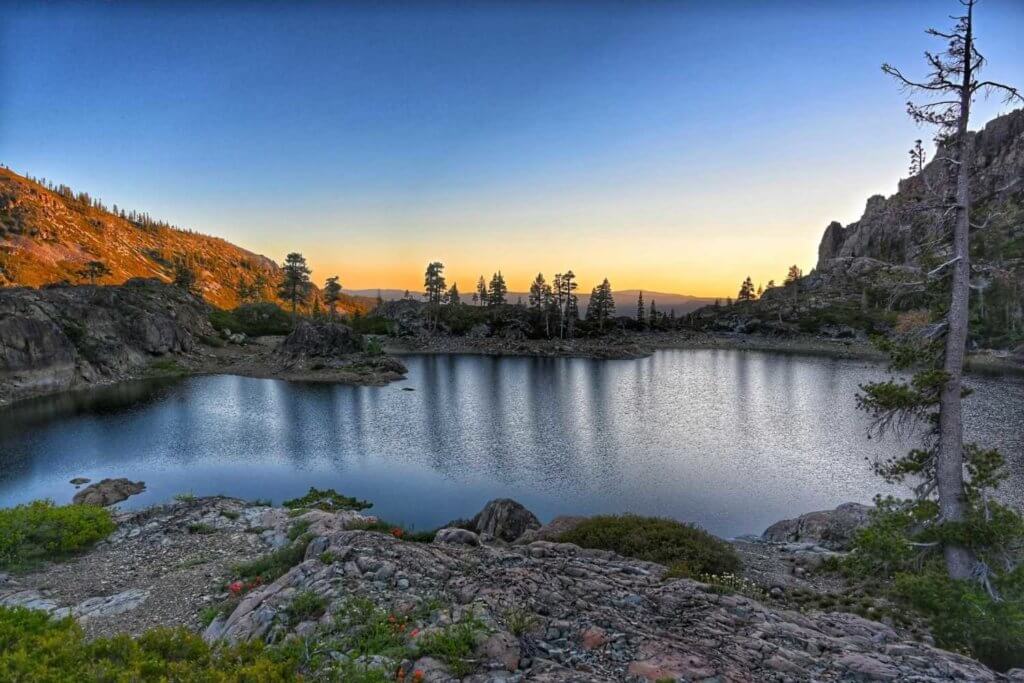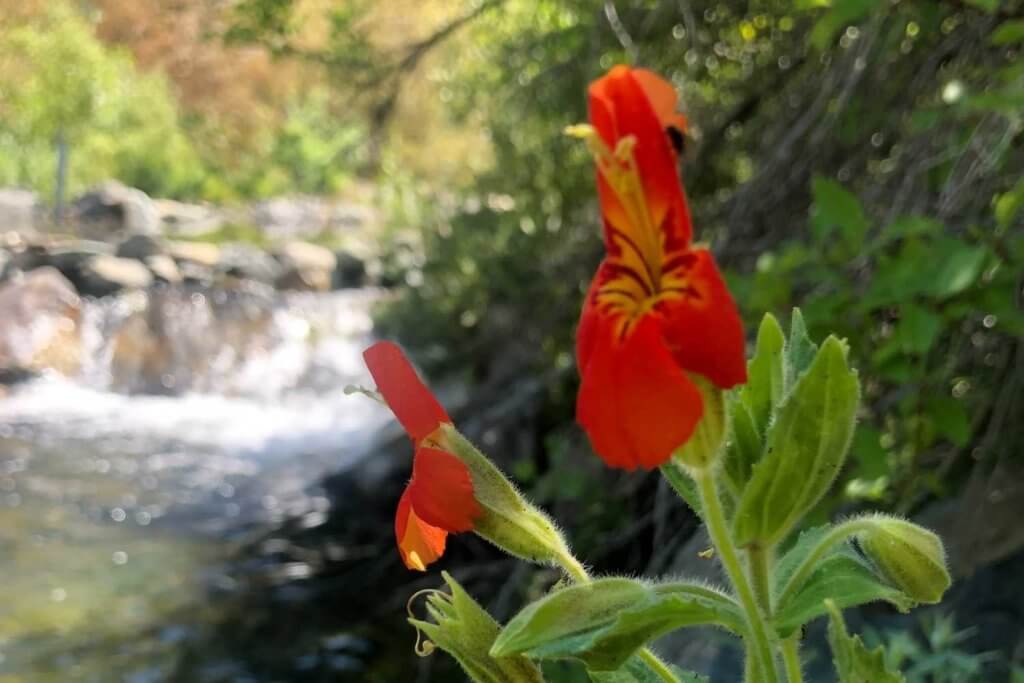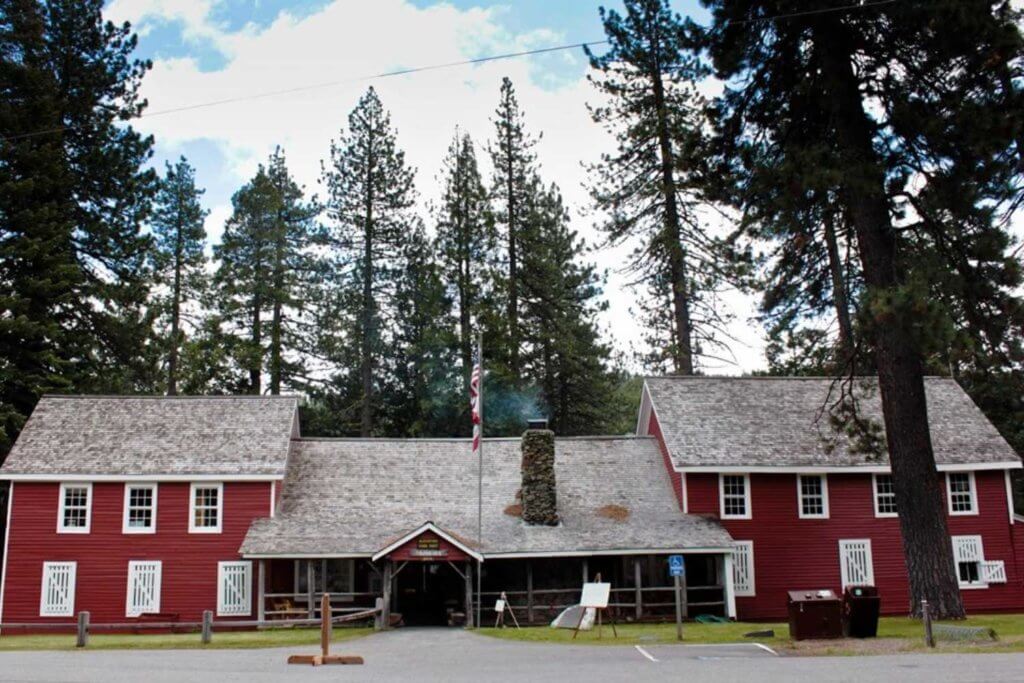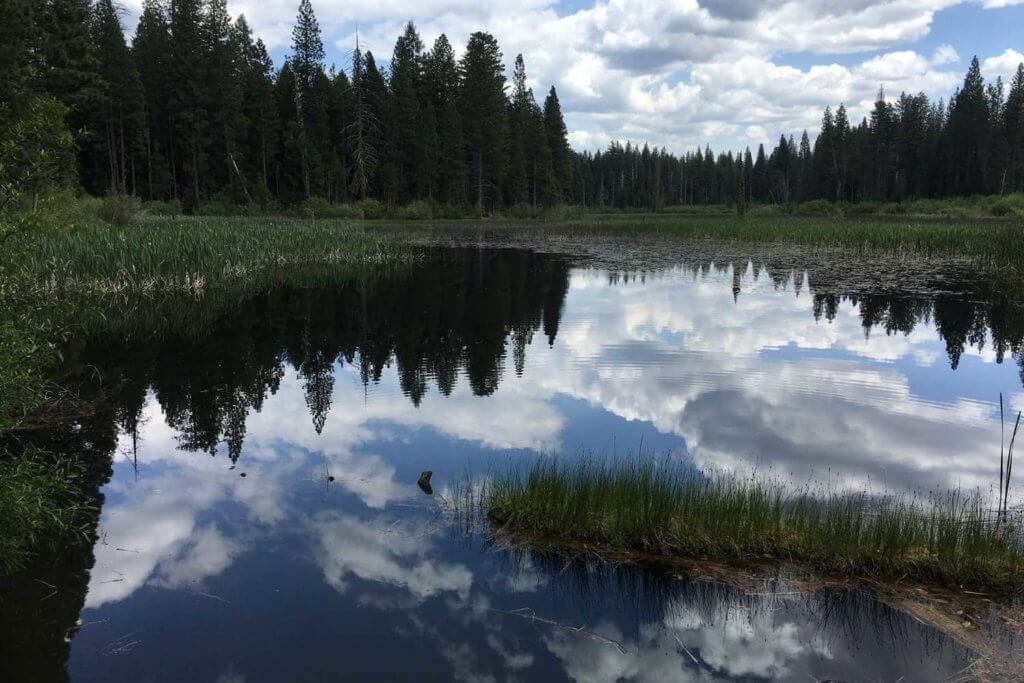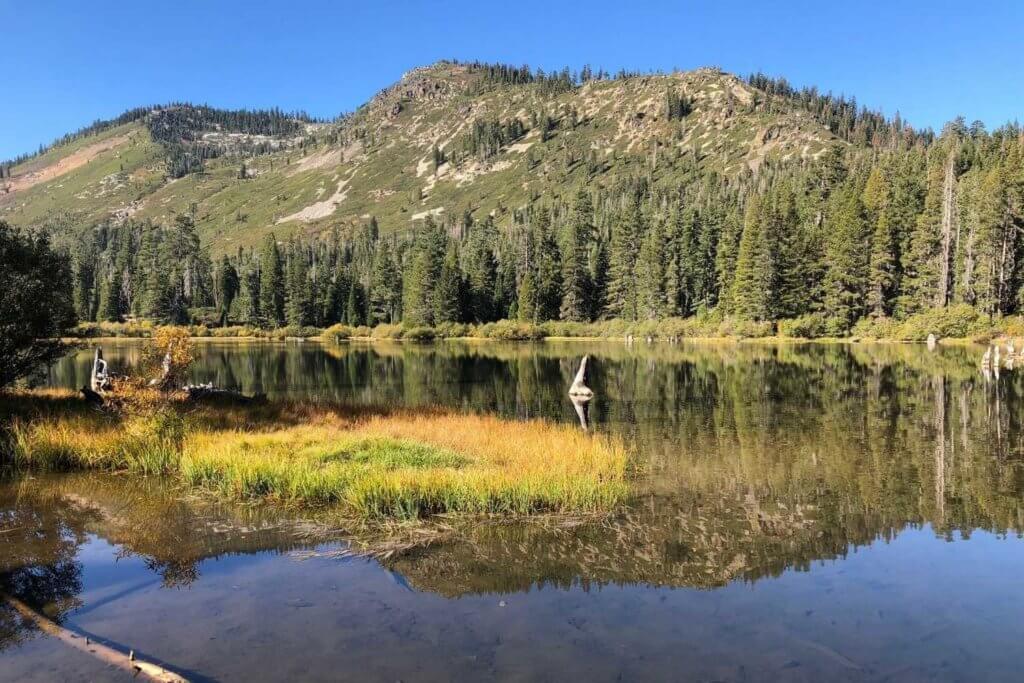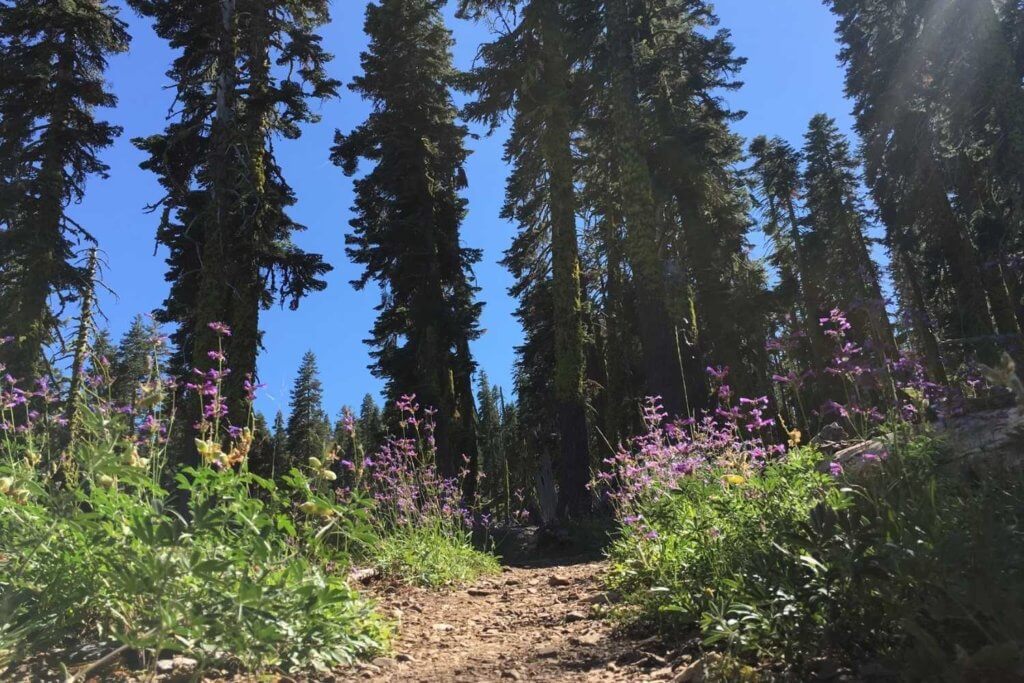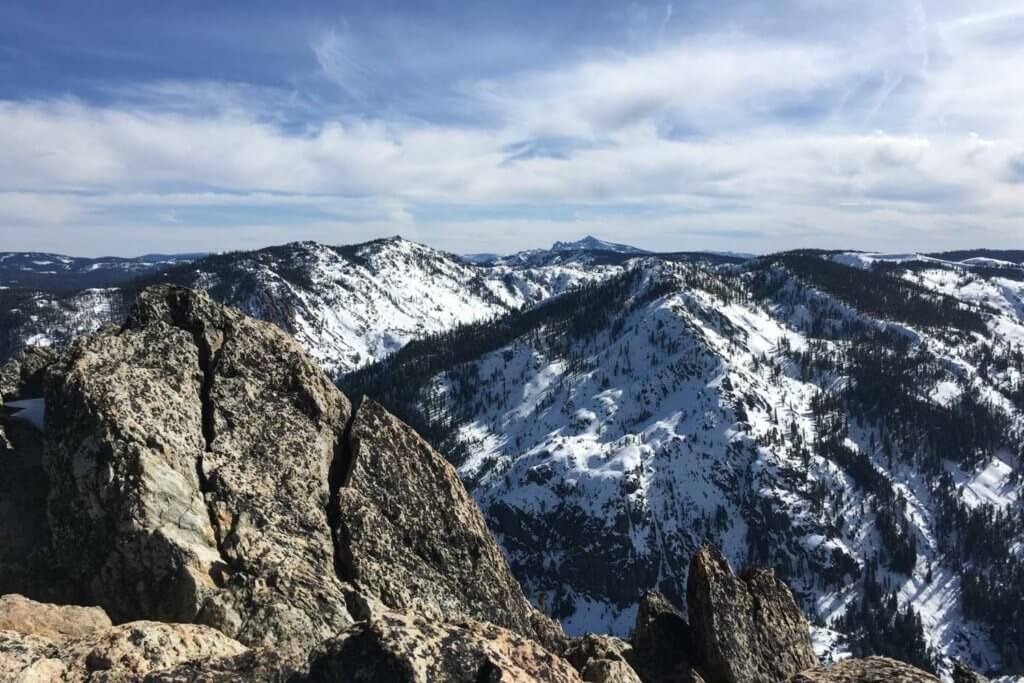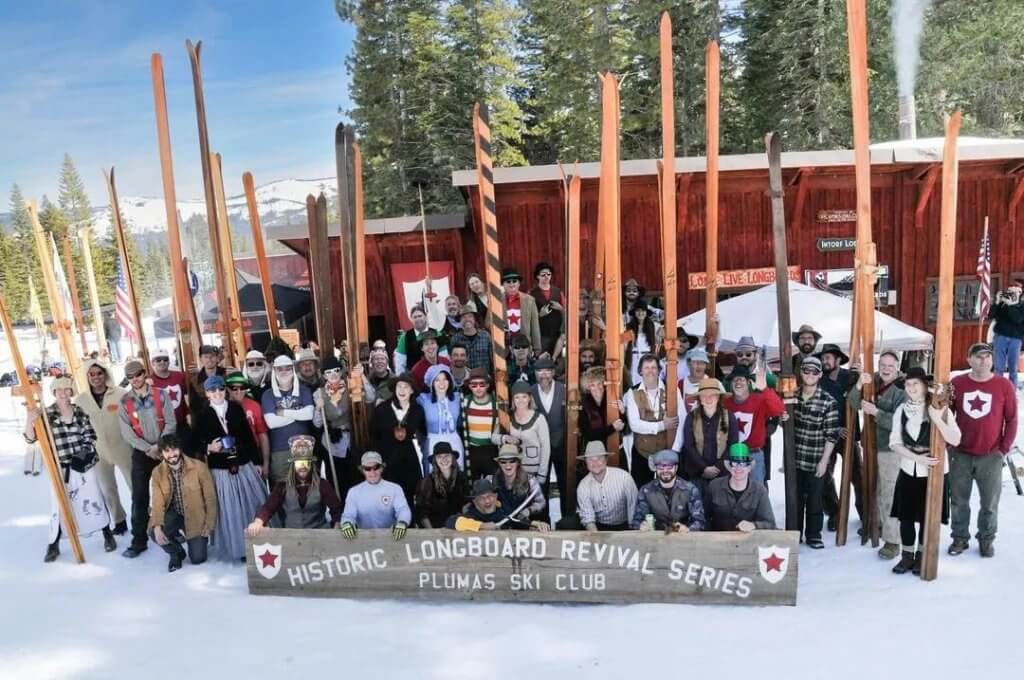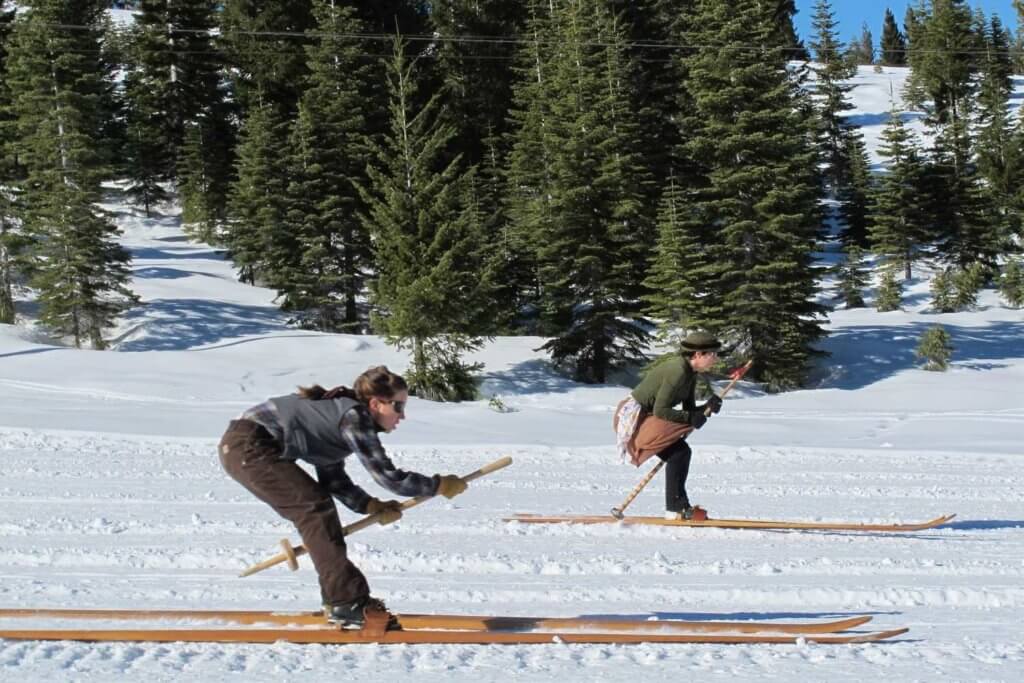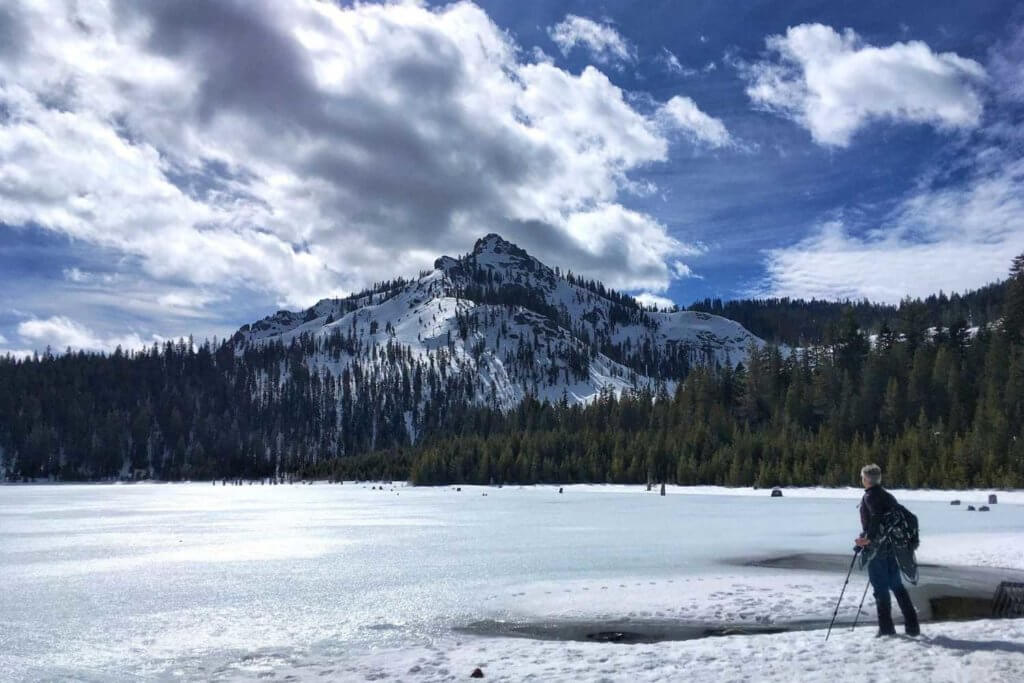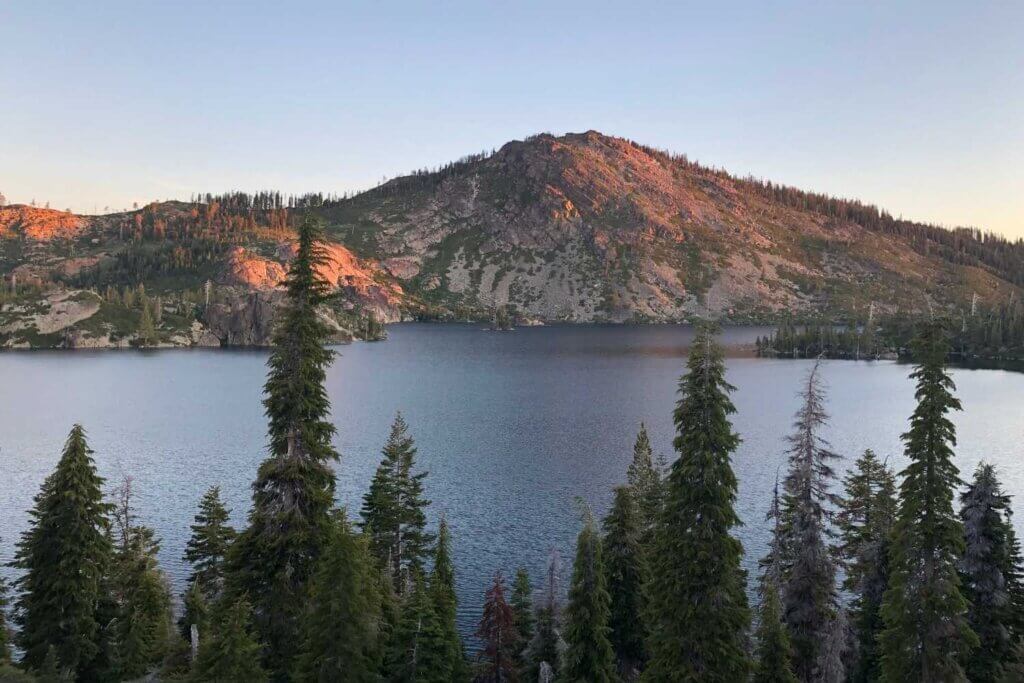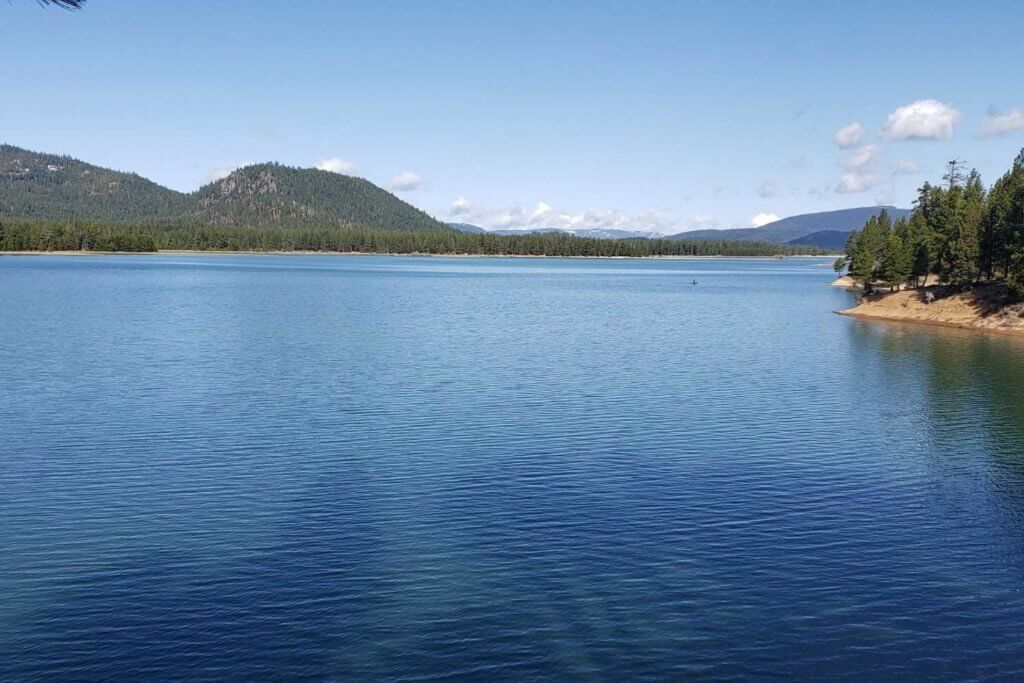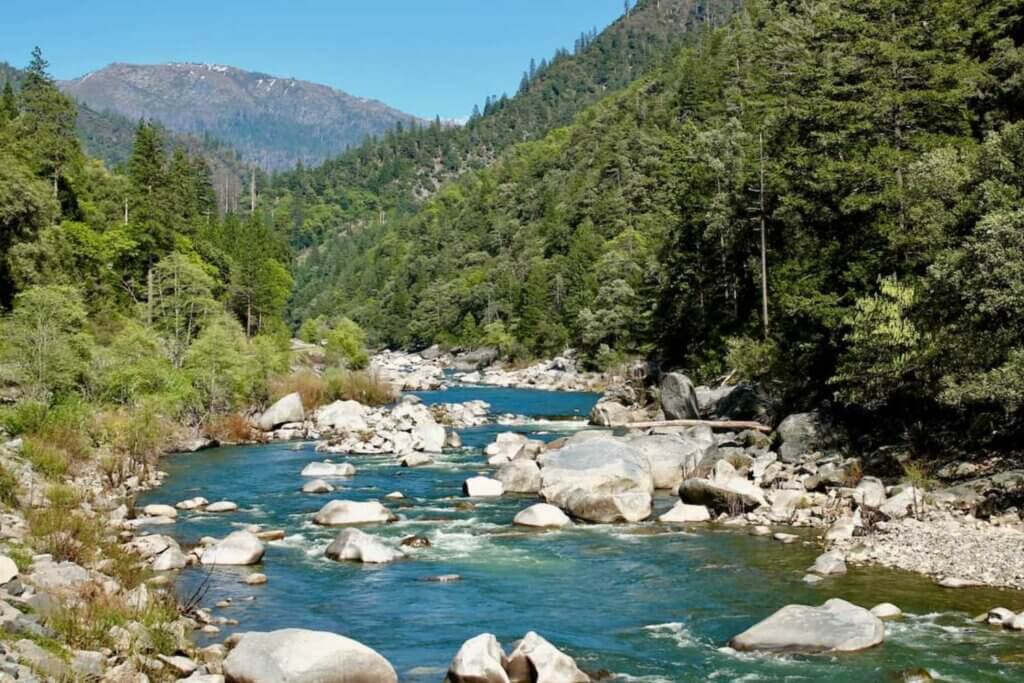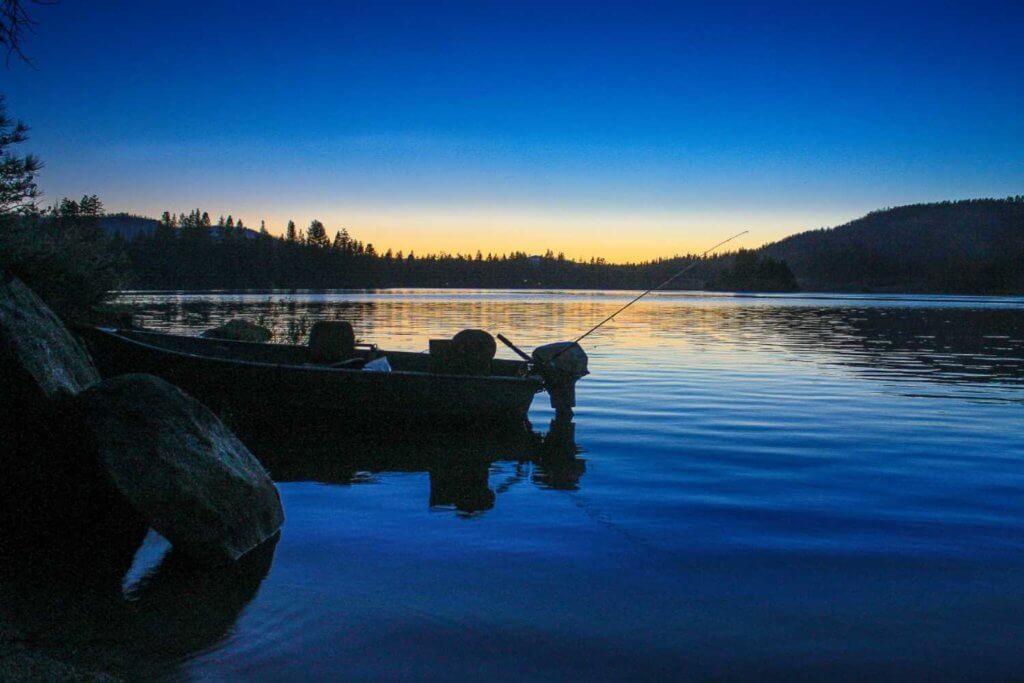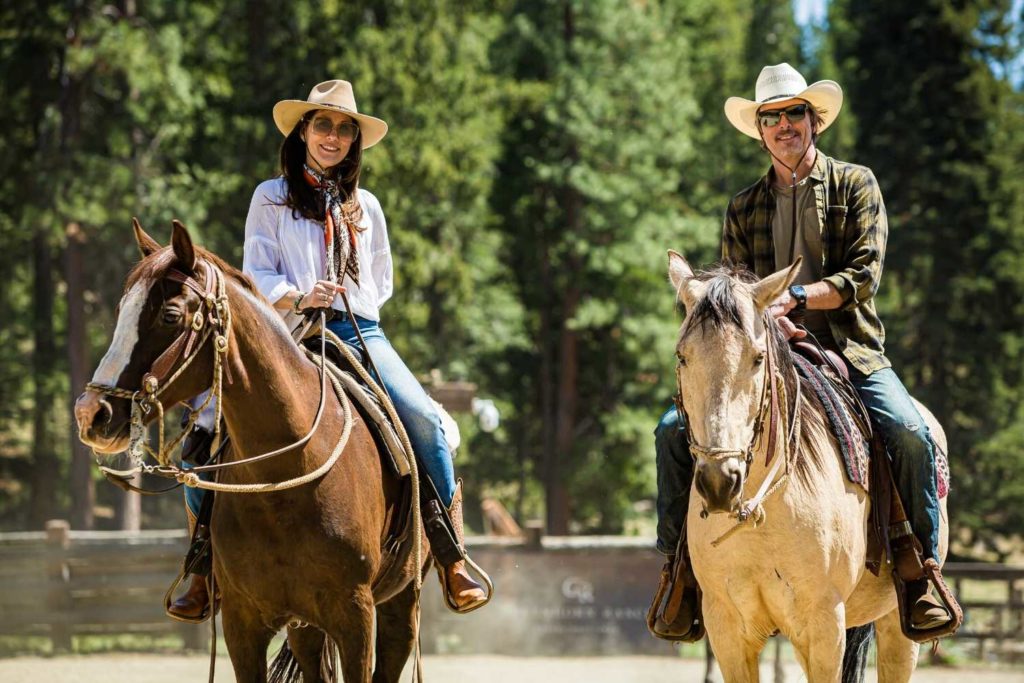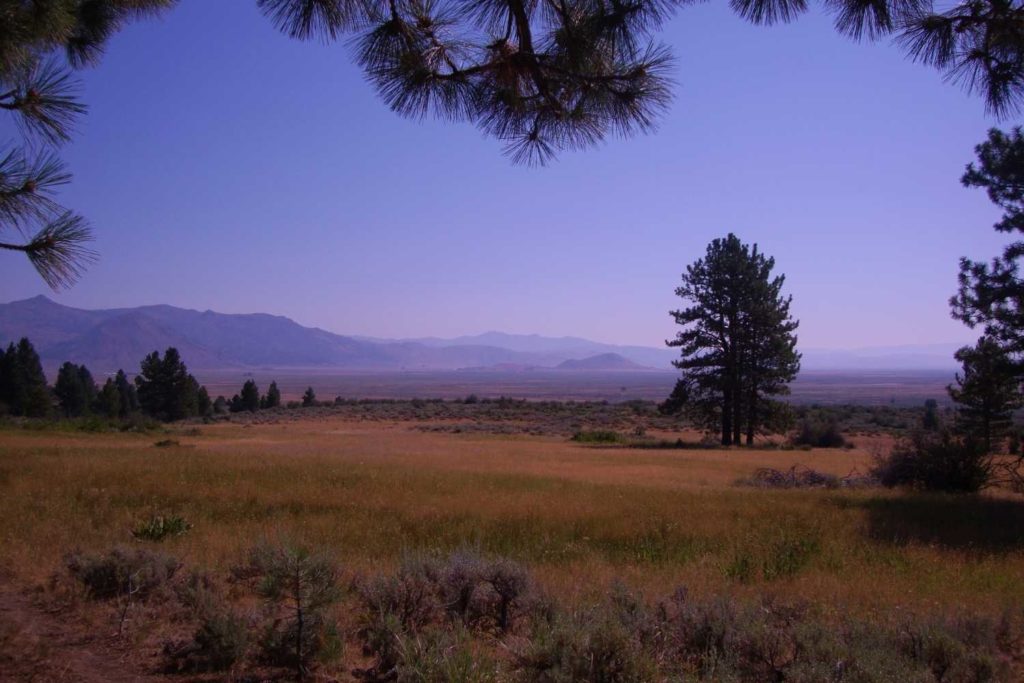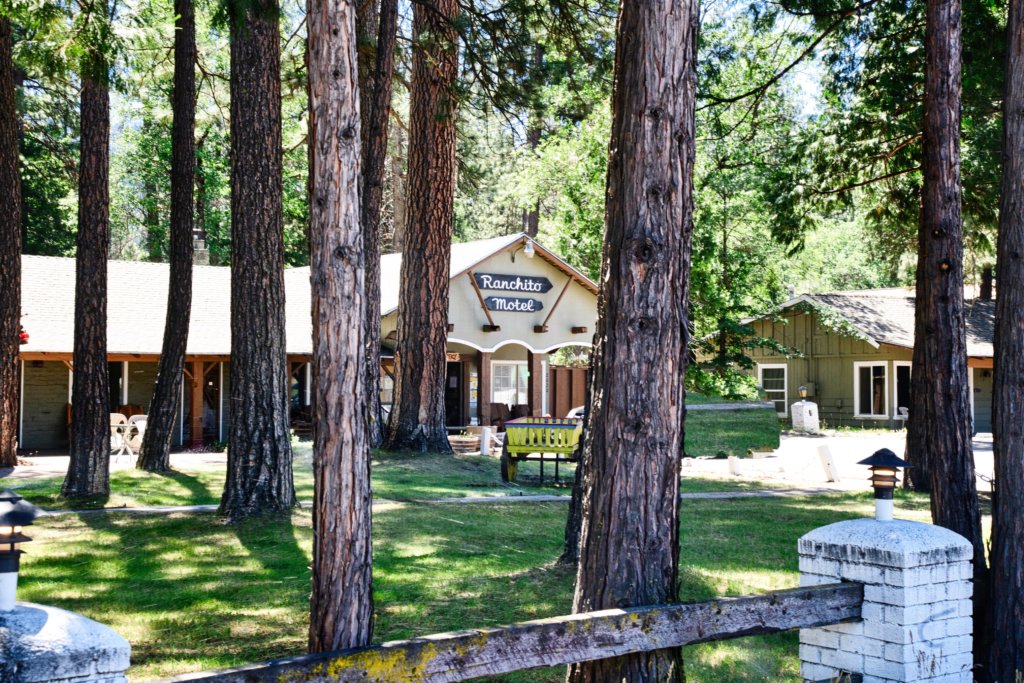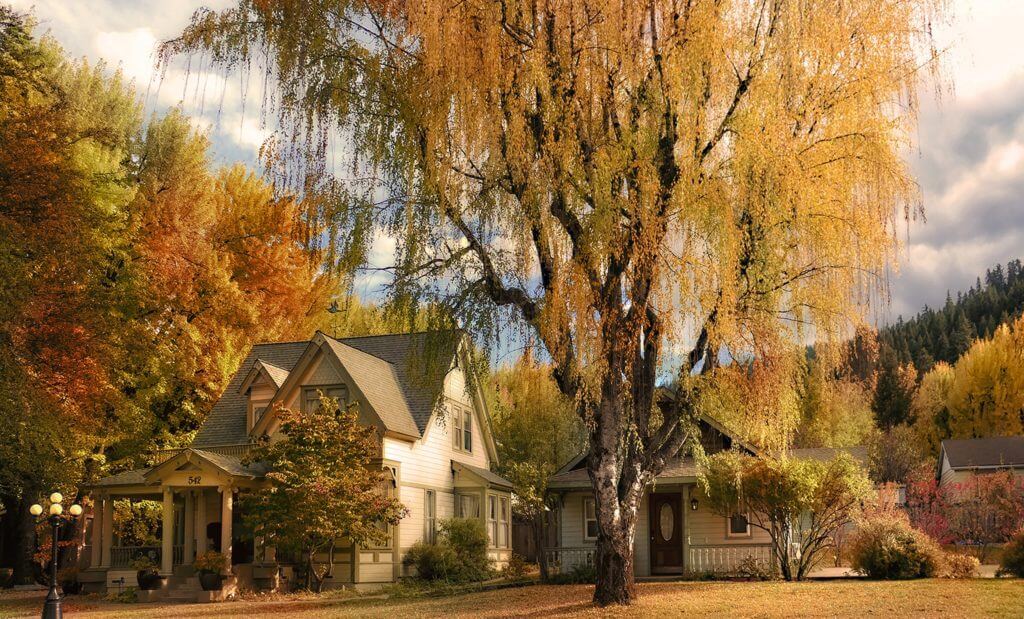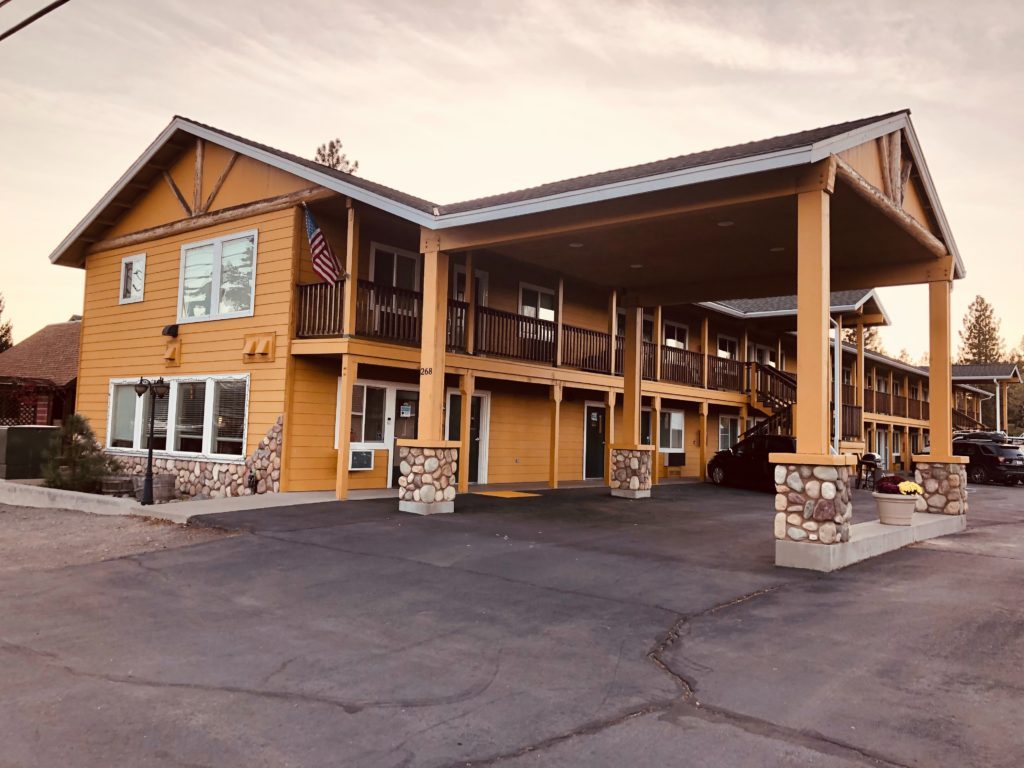Plumas-Eureka State Park is a hidden gem in the State Park system. The park features family-friendly camping, crystal clear lakes, a historic mining-era village, beautiful hiking trails, and impressive, big mountain views of surrounding peaks. The park has a variety of wildflowers in the spring and summer and gorgeous fall colors with aspens, willows, and cottonwoods along picturesque Jamison Creek.
Plumas-Eureka State Park is situated at the foot of Eureka Peak, originally called Gold Mountain, and is home to the famous longboard races–the first recorded downhill ski race in the Western Hemisphere. Elevation ranges from 4,720 feet at the visitors center and campground up to 7,447 feet at Eureka Peak. The park has a myriad of trails that start in towering pines and fir forests and meander up to high granite lakes, waterfalls, and into the adjacent Lakes Basin Recreation Area.
Plumas-Eureka State Park is located five miles from Graeagle on Johnsville Road (County Road A-14). The park is open year-round as has free admission! It is well worth a short detour off of Hwy. 89 for a picnic and a hike, or spend a few nights getting to know this special corner of the Lost Sierra.
The Lakes and Creeks of the Park
Jamison Creek is a beautiful cold water creek that meanders through Plumas-Eureka Stat Park. The creek is a lesser-known fishing spot with wild rainbow trout. Madora Lake is a shallow lake with a beautiful small creek, wet meadows, and well maintained trails–perfect for a to enjoy wildflowers. Eureka Lake has a majestic view of Eureka Peak and is great for swimming on hot summer days, fishing, and even ice-skating in the winter if conditions are right.
Hiking Plumas-Eureka
The Park has some lovely hikes from easy woodland strolls to mountainous adventures. Please note that dogs are not allowed on all park trails and must be leashed when out of the car. The Park is adjacent to the Lakes Basin Recreation Area and has trails leading to several peaks including access to the Pacific Crest Trail.
Madora Lake Loop: an easy, well maintained loop trail featuring wide trails for walking, jogging, and strolling with wet meadow, creek, and pond habitats with many native plants and birds. No dogs allowed on this trail.
The Museum Trail: a meandering forest and meadow trail that is relatively flat, has some beautiful views, and is great for families. The path starts at the Plumas-Eureka headquarters and museum and travels along an old flume, through a forest and wetland on a raised boardwalk, and ends after 1.2 miles at the Upper Jamison Creek Campground.
Jamison Mine Trail: Sometimes called the Jamison Creek Trail, this lovely, rocky trail starts in the State Park following Jamison Creek and heads up hill to high mountain lakes connecting to many more trails in the Lakes Basin.
Eureka Lake: a moderate out and back trail leading to Eureka Lake with awesome views of Eureka Peak and surrounding mountain ranges. Trails continue past the lake for the adventurous hikers looking for a summit.
Winter in the Park
Plumas-Eureka is transformed into a winter paradise during the winter months. Visitors can drive the well-cleared roads to enjoy the various cross-country ski loops, including the 2.5-mile groomed Jamison Canyon Ski Trail, which starts and ends near the museum. Or you can follow the road until it ends at the Eureka Ski Bowl to access more backcountry skiing.
The Plumas-Eureka Ski Bowl is known worldwide for the annual longboard races held on the third Sunday of each month in January, February, and March. The area is home to the first downhill skiing competition in the western hemisphere, starting in 1861. The prize money could be as high as $1,000 back in those days! It is also reported that Snowshoe Thompson, who carried the mail on snowshoes over the Sierra Nevada mountains between Placerville and Genoa, attended one of these races. However, he failed to capture the top prize.
The Plumas Ski Club organizes the Historic Longboard Ski Revival Series Races. Learn about DOPE as the secret to winning the races.
Explore More
In addition to the quiet recreation opportunities found in the Park, visitors can gain a glimpse of the fascinating period in California history related to the Gold Rush.
Plumas County is not often thought of in relation to the Gold Rush, but it has several sites with significant gold discoveries. The Plumas-Eureka Mine was one of the most productive gold mines in the northern Sierra Nevada and the preeminent gold mine in Plumas County.
The Park has preserved many structures from the Plumas Eureka Mine. Be sure to visit the indoor museum, which was initially the bunkhouse for the mine. Make sure to view equipment and relics from the past, including a blacksmith shop, a partially restored mill, and a restored miner’s home.
The Park offers many interpretive events, such as campfire programs, nature walks, history tours, and supervised gold panning during the summer season.
Park docents in period attire re-create a miner’s lifestyle during Gold Discover Day’s, held on the third Saturday and Sunday each year in July. Blacksmithing demonstrations, mining lore, rides on authentic hay wagons, and home tours help take visitors back to the 1890s. Come early for the pancake breakfast.
Check the volunteer-run Plumas-Eureka Park Association website for details on ranger-led activities, including snowshoe nature hikes in the winter months.
Johnsville was established in 1876 after gold was discovered in the area in 1851. During the heydey of the gold rush, Johnsville had a population of 300 to 400, primarily single men working the mines. Today the population fluctuates between 30 and 75 residents. Only one historic building dating back to 1906 remains in Johnsville. It has been home to the Iron Door Restaurant since 1961.
